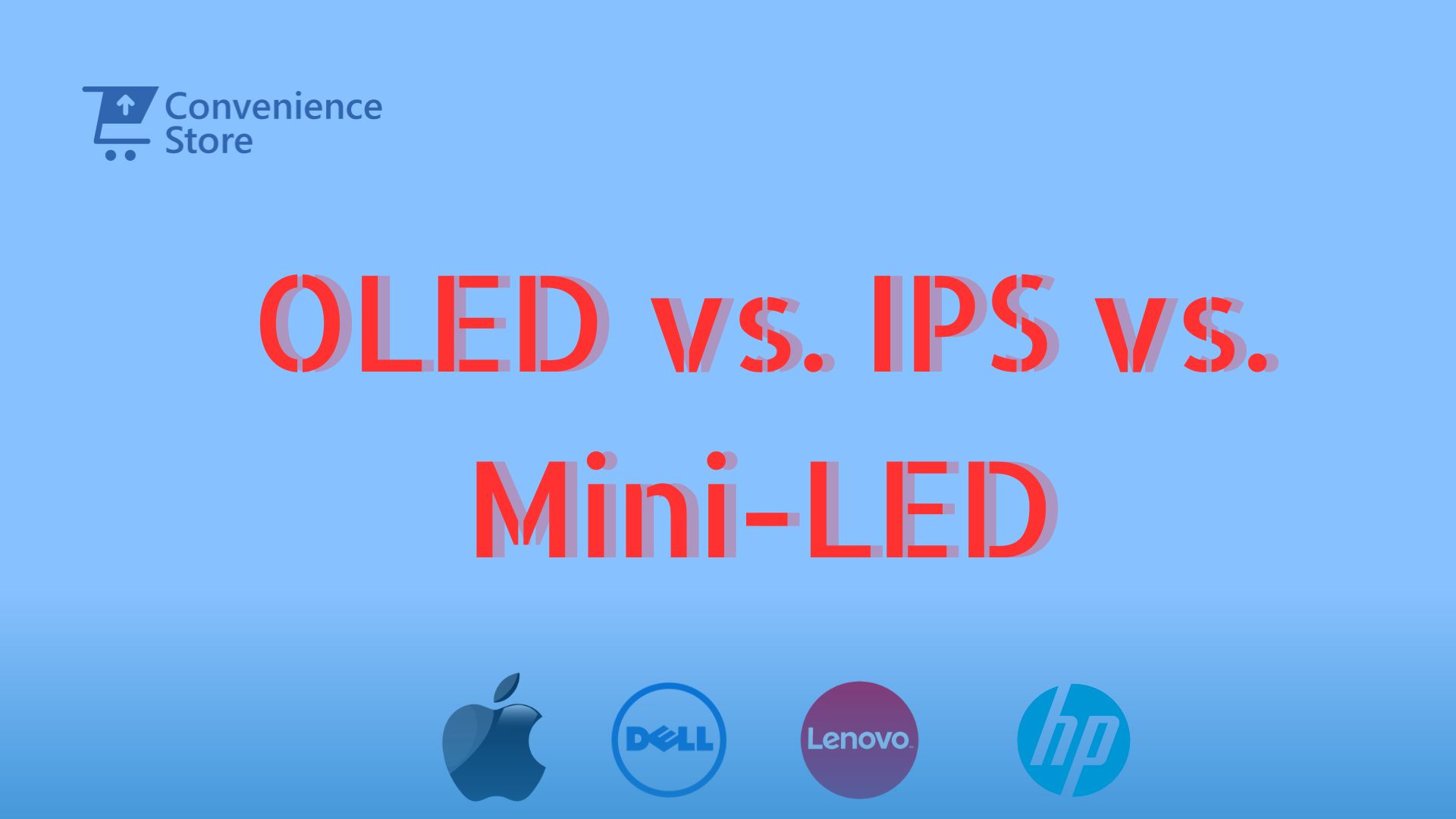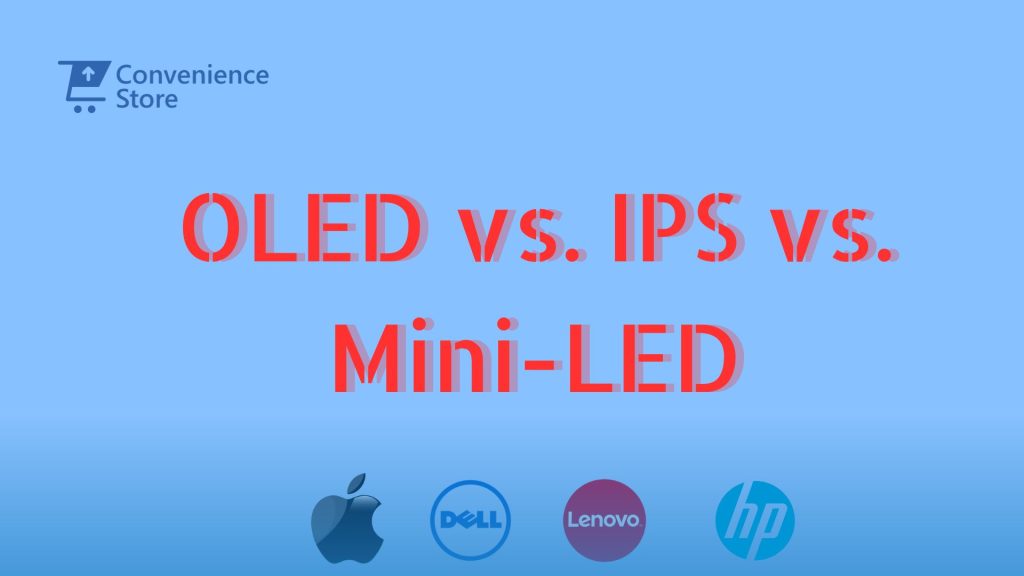The Future of Laptop Displays: OLED vs. IPS vs. Mini-LED


As technology evolves, so do the components that make up our everyday devices. One of the most critical components of any laptop is its display. The quality of the display can significantly impact the user experience, influencing everything from work productivity to entertainment enjoyment. This blog delves into the future of laptop displays, comparing OLED, IPS, and Mini-LED technologies to help you make an informed decision. Whether you are a tech enthusiast or a consumer looking to buy an affordable laptop in Nairobi, understanding these display technologies can guide your purchase decision.
Understanding Display Technologies
Before diving into the specifics of each technology, it’s essential to understand what OLED, IPS, and Mini-LED mean and their development history.
OLED (Organic Light-Emitting Diode) displays are known for their vibrant colors and deep blacks. Each pixel in an OLED screen emits its own light, allowing for high contrast ratios and fast response times.
IPS (In-Plane Switching) is a type of LCD that offers better color accuracy and wider viewing angles compared to traditional LCDs. IPS displays are widely used in various devices, including laptops, for their reliability and performance.
Mini-LED is a newer technology that uses smaller LEDs to provide backlighting for LCD screens. This technology allows for better local dimming and higher brightness levels, bridging some of the gaps between OLED and traditional LED displays.
OLED Displays
How OLED Technology Works
OLED technology consists of organic compounds that emit light when an electric current is applied. This allows for individual pixels to be turned on or off, creating perfect blacks and an infinite contrast ratio.
Advantages of OLED
- High Contrast Ratio: OLED displays can achieve true black levels, offering an excellent contrast ratio.
- Color Accuracy: OLEDs provide vibrant and accurate colors, making them ideal for photo and video editing.
- Response Time: Fast response times reduce motion blur, beneficial for gaming and fast-paced video.
Disadvantages of OLED
- Burn-in Risk: Prolonged display of static images can cause burn-in, where ghost images remain on the screen.
- Cost: OLED screens are generally more expensive to produce.
Current Laptops Using OLED Displays
Many high-end laptops, including models from Dell, HP, and Lenovo, offer OLED display options, providing stunning visuals for professional and entertainment use.
IPS Displays
How IPS Technology Works
IPS technology works by aligning liquid crystals in a plane parallel to the display, improving viewing angles and color reproduction.
Advantages of IPS
- Wide Viewing Angles: IPS displays maintain color accuracy and brightness at various angles.
- Color Consistency: Consistent color reproduction across the entire screen makes IPS ideal for graphic design and media consumption.
Disadvantages of IPS
- Lower Contrast Ratio: Compared to OLED, IPS displays have a lower contrast ratio, with blacks appearing more like dark grays.
- Slower Response Time: While adequate for most uses, IPS displays may not be the best choice for competitive gaming.
Current Laptops Using IPS Displays
IPS displays are common in many laptops, from affordable models to high-end machines, due to their balanced performance and cost-effectiveness.
Mini-LED Displays
How Mini-LED Technology Works
Mini-LED technology uses smaller LEDs as a backlight, allowing for more precise control over dimming zones and improved brightness and contrast.
Advantages of Mini-LED
- Higher Brightness: Mini-LEDs can achieve higher brightness levels, making them ideal for HDR content.
- Better Local Dimming: Enhanced local dimming capabilities improve contrast and reduce halo effects.
Disadvantages of Mini-LED
- Cost: The advanced technology makes Mini-LED displays more expensive than traditional LCDs.
- Complexity: Increased manufacturing complexity can lead to higher production costs and potential issues.
Current Laptops Using Mini-LED Displays
Apple’s MacBook Pro models have been at the forefront of adopting Mini-LED technology, offering exceptional display performance for professionals.
Performance Comparison
Image Quality
Color Accuracy: OLED displays usually offer the best color reproduction, followed by IPS panels. Mini-LED is also excellent but can vary depending on implementation.
Contrast and Black Levels: OLED leads with true blacks and infinite contrast. Mini-LED comes next with improved local dimming, while IPS has the lowest contrast ratio among the three.
Brightness: Mini-LED can achieve higher brightness levels, making it suitable for bright environments and HDR content. OLED and IPS follow, with OLED excelling in dark scenes.
Durability and Lifespan
Longevity: IPS panels generally have the longest lifespan with no risk of burn-in. Mini-LED is also durable, but OLED screens may suffer from burn-in over time.
Issues like Burn-In and Image Retention: OLED is prone to burn-in, while IPS and Mini-LED do not have this issue.
Power Consumption
Efficiency: OLED panels are more power-efficient when displaying dark content, as pixels can be turned off. IPS and Mini-LED consume more power uniformly across the display.
Impact on Battery Life: OLED can extend battery life in dark mode, while IPS and Mini-LED have more consistent power consumption.
Use Case Scenarios
Gaming
- OLED: Ideal for gamers due to its fast response times and high contrast ratio, providing an immersive experience.
- IPS: A good choice for casual gamers who value color accuracy and viewing angles over response time.
- Mini-LED: Offers high brightness and good HDR performance, making it suitable for gamers who play in varied lighting conditions.
Professional Work (Design and Editing)
- OLED: Excellent for graphic designers and video editors who require true blacks and high color accuracy.
- IPS: Preferred by professionals who need consistent color accuracy and wide viewing angles.
- Mini-LED: Suitable for video editing with its high brightness and improved local dimming for better contrast.
General Use
- OLED: Great for media consumption and general use, but consider the burn-in risk for static content.
- IPS: Versatile for everyday tasks, offering good color reproduction and viewing angles without burn-in concerns.
- Mini-LED: Provides a balanced experience with high brightness and good contrast, suitable for a variety of tasks.
Portability and Battery Life
- OLED: Best for users who prefer dark mode to maximize battery life.
- IPS: Reliable for consistent battery performance without worrying about burn-in.
- Mini-LED: Offers a good compromise between battery life and display quality, ideal for portable use.
Cost Comparison and Value for Money
When buying an affordable laptop in Nairobi, IPS displays offer the best value for money, balancing performance and cost. OLED and Mini-LED, while more expensive, provide superior display quality for those who need it.
Future Trends and Developments
Emerging Technologies and Innovations
- Micro-LED: Promising even better performance than OLED and Mini-LED, though still in early stages.
- Quantum Dot Technology: Enhancing color accuracy and brightness in displays.
Predictions for the Future of Laptop Displays
Expect increased adoption of OLED and Mini-LED technologies as costs decrease and manufacturing processes improve. Innovations will continue to push the boundaries of display quality, offering consumers better options.
Potential Impact on Consumer Choices and Market Trends
As display technology evolves, consumers will have more choices tailored to their specific needs, from high-performance gaming laptops to cost-effective devices for everyday use.
Choosing the right laptop display depends on your needs and budget. OLED offers unparalleled image quality but at a higher cost and with potential burn-in issues. IPS provides excellent color accuracy and durability, making it ideal for budget-conscious buyers. Mini-LED strikes a balance with high brightness and improved contrast, suitable for those who want the best of both worlds.
FAQs
Q: What is the best display for gaming?
A: OLED offers the best response times, while Mini-LED provides high brightness and good contrast. IPS is also a solid choice for color accuracy.
Q: Are OLED screens worth the extra cost?
A: If you prioritize image quality and can handle the potential for burn-in, OLED is worth the investment.
Q: Can I find laptops with Mini-LED displays in Nairobi?
A: Yes, many laptop sellers in Nairobi offer models with Mini-LED technology. Check with local dealers for availability.




